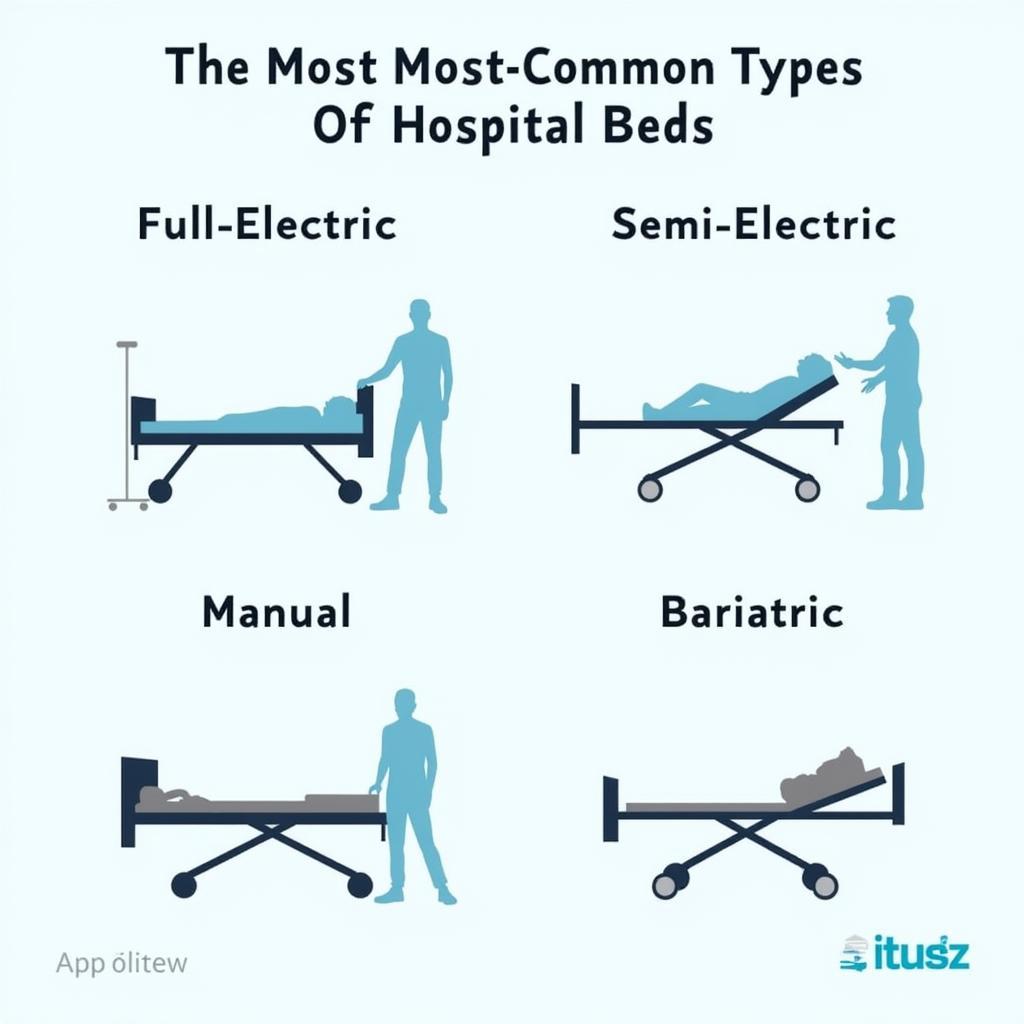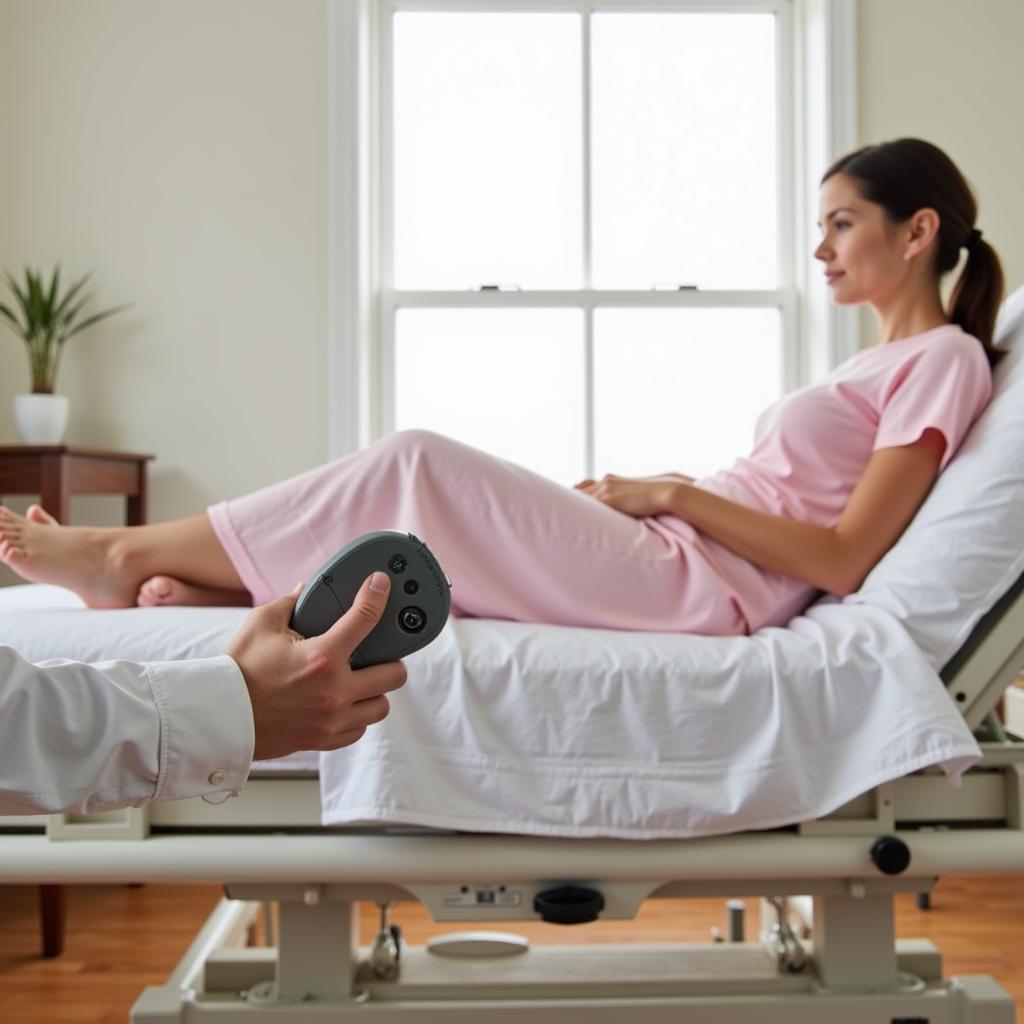Medical Hospital Beds are essential for providing comfort, safety, and improved care for patients in various healthcare settings. Selecting the appropriate bed can significantly impact a patient’s well-being and recovery. Understanding the different types of medical hospital beds, their features, and factors to consider during selection is crucial for healthcare providers and individuals seeking the best options for themselves or loved ones.
 Different Types of Medical Hospital Beds
Different Types of Medical Hospital Beds
Types of Medical Hospital Beds
Various medical hospital beds cater to specific patient needs and medical conditions. Here are some common types:
Full-Electric Beds
Full-electric beds offer the highest level of adjustability and are operated electronically using hand controls. These beds allow for adjustments to the height, head, and foot sections, and some models even offer Trendelenburg and reverse Trendelenburg positioning to assist with circulation and respiratory needs.
Semi-Electric Beds
As the name suggests, semi-electric beds offer a balance between manual and full-electric functionality. The height adjustment is often manual, while the head and foot sections are electronically controlled. Semi-electric beds are a cost-effective option that still provides a good level of patient comfort and convenience for caregivers.
 Semi-Electric Hospital Bed with Patient
Semi-Electric Hospital Bed with Patient
Manual Beds
Manual hospital beds are the most basic type, typically adjusted using cranks located at the foot or sides of the bed. While they may lack the advanced features of electric beds, manual beds are generally more affordable and suitable for patients who don’t require frequent positioning changes.
Bariatric Beds
Designed specifically for heavier patients, bariatric beds are wider and more durable than standard hospital beds. These beds have a higher weight capacity and often feature reinforced frames and support systems for added stability and safety.
Factors to Consider When Choosing a Medical Hospital Bed
Selecting the right medical hospital bed requires careful consideration of various factors, including:
Patient Needs
The patient’s medical condition, mobility level, and overall comfort requirements are paramount. For instance, a patient recovering from surgery may benefit from a full-electric bed for easy positioning and pain management. In contrast, a patient with limited mobility may require a bariatric bed with additional safety features.
Size and Weight Capacity
Choosing a bed with appropriate dimensions and weight capacity is essential to ensure patient safety and comfort. Factors to consider include the patient’s height, weight, and any anticipated changes in these measurements during their recovery.
Features and Functionality
Different hospital beds offer various features to address specific needs. Consider features such as adjustable bed height, Trendelenburg and reverse Trendelenburg positioning, side rails, and integrated scales for weighing patients.
Budget
Hospital beds come in a wide price range. Setting a budget beforehand can help narrow down the options and choose a bed that offers the best value for money without compromising essential features.
Durability and Maintenance
Opting for a durable and easy-to-clean bed is crucial, especially for long-term use. Look for beds made from high-quality materials and with a sturdy construction to ensure longevity.
 Hospital Room with Adjustable Bed
Hospital Room with Adjustable Bed
Benefits of Using a Medical Hospital Bed
Using a medical hospital bed offers numerous benefits for patients and caregivers alike:
Enhanced Patient Comfort
Hospital beds are designed with patient comfort as a top priority. Adjustable features allow patients to find comfortable positions, reducing pressure points and promoting better sleep.
Improved Safety
Hospital beds often incorporate safety features such as side rails to prevent falls and secure restraints for patients at risk of wandering or self-harm.
Facilitate Medical Care
Hospital beds often have features that facilitate medical procedures and examinations. Adjustable height makes it easier for healthcare providers to access patients, while IV poles and other accessories can be attached for convenient care delivery.
Caregiver Convenience
Hospital beds with adjustable features and mobility options can significantly ease the burden on caregivers. They can effortlessly reposition patients, assist with transfers, and provide care without straining their backs.
Frequently Asked Questions About Medical Hospital Beds
What is the average lifespan of a medical hospital bed?
The lifespan of a medical hospital bed depends on its usage, maintenance, and quality. However, a well-maintained bed can last for several years.
Can I rent a medical hospital bed for home use?
Yes, many medical supply companies offer hospital bed rentals for home use, especially for patients recovering from surgery or with chronic conditions.
Are medical hospital beds covered by insurance?
Insurance coverage for medical hospital beds varies depending on the provider, policy, and medical necessity. It’s essential to check with your insurance company to determine coverage details.
Conclusion
Choosing the right medical hospital bed is crucial for patient comfort, safety, and overall well-being. By understanding the different types, considering essential factors, and exploring available options, you can make an informed decision that best meets your or your loved one’s needs. If you are unsure about what kind of bed is right for you, it is always best to consult with a healthcare professional. For more information on related topics, you may find these articles helpful: what does evs mean in hospital and what do patients wear in hospitals.
Need assistance choosing the right medical hospital bed? Contact us at Phone Number: 02437655121, Email: [email protected] Or visit us at: 298 Cau Dien Street, Minh Khai, Bac Tu Liem, Hanoi, Vietnam. We have a 24/7 customer support team.